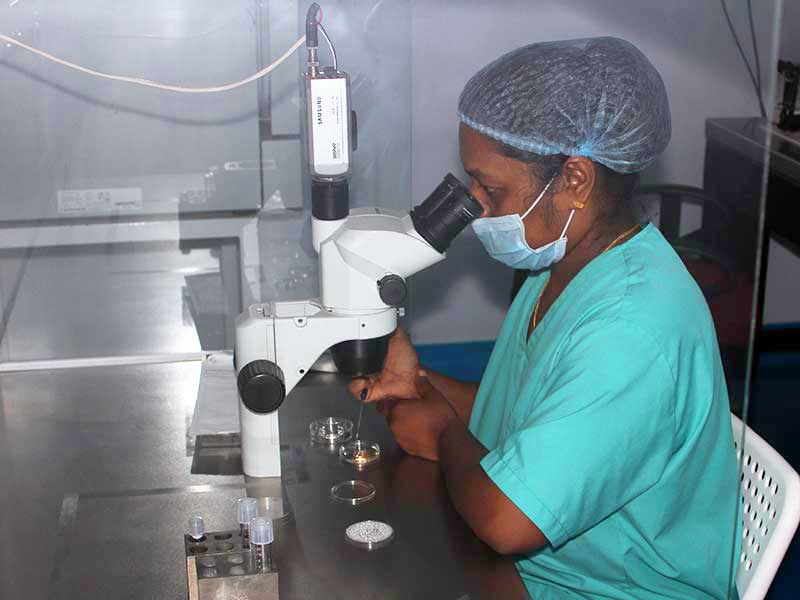ICSI (Intracytoplasmic Sperm Injection)
Intracytoplasmic Sperm Injection (ICSI) is a procedure that is performed on infertile couples to increase their chances at fertilization so that they can realize their dream of conceiving a baby of their own.
Why is it needed?The normal process of fertilization needs the male sperm to fuse with the female egg where the head of the sperm latches onto the egg’s outer surface. The sperm will then penetrate into the cytoplasm where the actual fertilization occurs. However, in some cases, the sperm cannot enter through the egg’s outer layer for a variety of reasons, like,
- A thick outer layer of the egg that is hard to penetrate.
- SThe inability of the sperm to swim
These are the cases where the specialist would recommend performing the Intracytoplasmic Sperm Injection ICSI procedure along with the In-Vitro Fertilization (IVF) procedure for increasing the chances of fertilizing the egg. ICSI has proved to be an effective process in most of the cases it has been used, giving hope to couples who were not able to conceive earlier. It has helped in cases with male patients with immobile sperm. ICSI has also been used as an option to treat some genetic problems present in the embryo.
Who needs ICSI?The specialist usually recommends ICSI for patients who might be undergoing the following:
- Very low sperm count.
- Improper or abnormal movement of the sperms.
- The difficulty of the sperm to latch onto the egg.
- In cases of failed fertilization of the egg through traditional IVF, regardless of the sperm’s condition.
- Presence of antibodies in the sperm in high quantities.
- The inability of the sperm to come out of the penis due to some blockage.
Procedure
The Intracytoplasmic Sperm Injection (ICSI) procedure involves the following steps:
- Collection of sperm from the male patient involves either masturbation or collecting them through a small incision in the testes of the male patient.
- Then comes the retrieval of the egg from the female patient after ovulation. The female patient is first injected with Follicle Stimulatin.
- Hormone (FSH) for a couple of weeks, leading to the production of multiple eggs. The eggs are then left to mature.
- The specialist will then use a specialized pipette to get hold of the matured egg.
- Then, a single sperm is immobilized and picked up using a very delicate, sharp, and hollow.
- The specialist will then use this needle to insert the sperm into the egg’s cytoplasm, through the egg’s outer layer.
- The sperm is now injected into the cytoplasm and the needle removed carefully.
- The specialist will then examine the egg for any sign of fertilization the next day.



Risks
The fertilization of the egg using the ICSI procedure has a statistical average of fertilizing 50%-80% of the eggs. However, there might be cases where some problems might occur during or after the ICSI process, like,
- Some or all of the eggs being damaged.
- Chances of the egg not growing into an embryo even after being injected with a sperm.
- Chances of the stopping of embryo growth
- Chances of birth defects, in very rare cases.
Infertility Clinic
It has survived not only five centuries, but also the leap into electronic typesetting, remaining popularised only five Power of centuries.
- Learn moreHolistic Treatment
It has survived not only five centuries, but also the leap into electronic typesetting, remaining popularised only five Power of centuries.
- Learn moreSexual medicine
It has survived not only five centuries, but also the leap into electronic typesetting, remaining popularised only five Power of centuries.
- Learn moreSurrogacy Services
It has survived not only five centuries, but also the leap into electronic typesetting, remaining popularised only five Power of centuries.
- Learn more